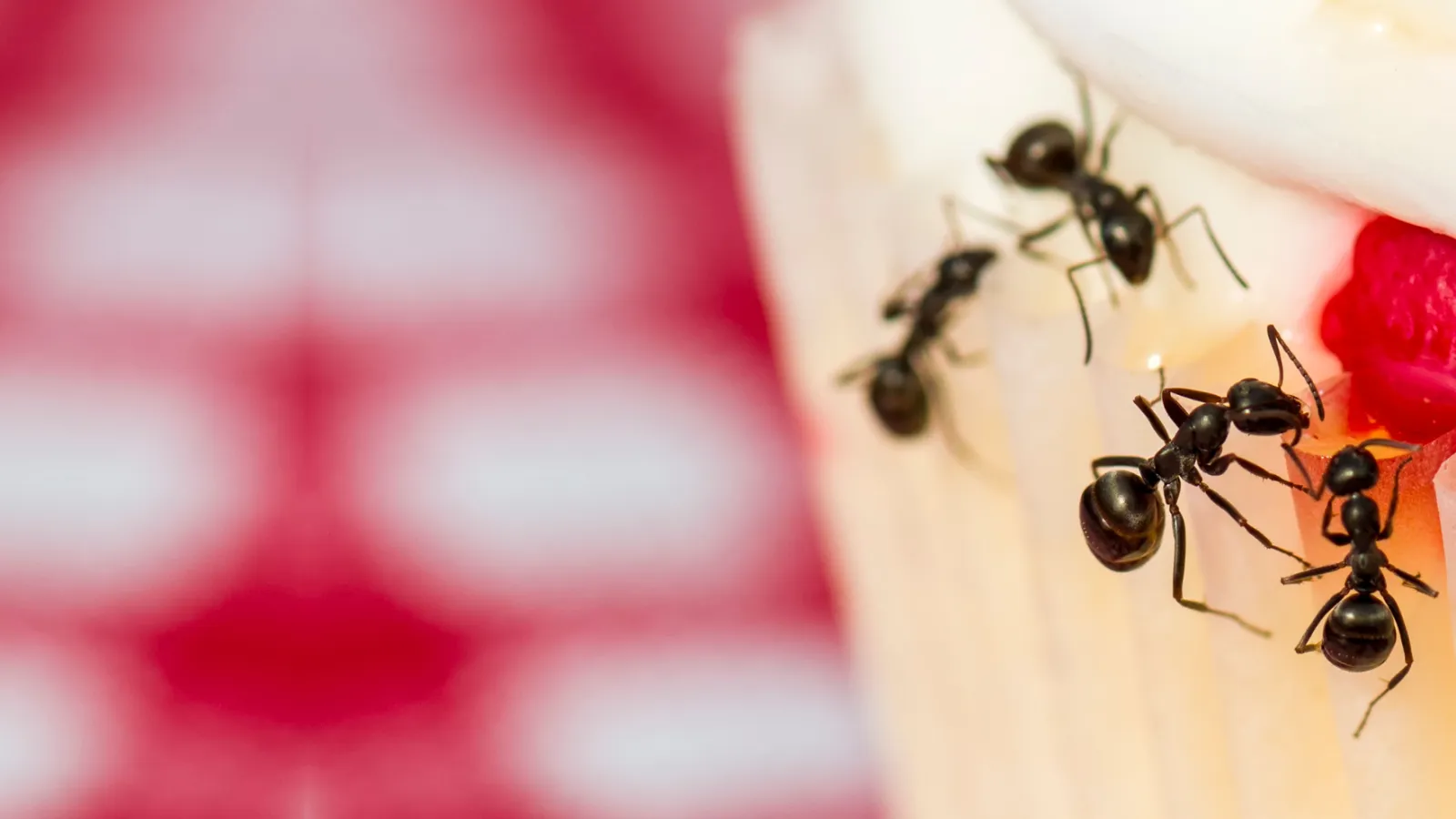
Ants
Latin Name: Formicidae
Pavement Ants
- Appearance: Pavement ants are small, typically dark brown to black, and about 1/8 inch long. They have parallel lines on their heads and thoraxes.
- Habitat: As their name suggests, they often nest under sidewalks, driveways, and building foundations. Indoors, they may establish nests in walls or under floors.
- Behavior: Pavement ants are opportunistic feeders, foraging for a variety of foods including sweets, grease, and proteins.
- Risks: While not dangerous, they can contaminate food and become a nuisance when they invade in large numbers.
Odorous House Ants
- Appearance: These ants are small (1/16 to 1/8 inch long), dark brown to black, with a slightly uneven thorax.
- Habitat: Odorous house ants are highly adaptable, nesting indoors in wall voids, under floors, or near heat sources in the winter. Outdoors, they nest under rocks, logs, or mulch.
- Behavior: When crushed, these ants release a distinctive smell described as rotten coconut. They prefer sweet foods and are particularly attracted to sugary spills or crumbs.
- Risks: Known for forming large colonies, odorous house ants can be difficult to control once they establish themselves indoors.
Argentine Ants
- Appearance: Argentine ants are small (1/8 inch long), light to dark brown, and have a uniform body color.
- Habitat: These ants are highly invasive, forming massive colonies with interconnected nests. Outdoors, they nest in moist areas like soil, mulch, and under debris. Indoors, they look for warmth and food sources.
- Behavior: Argentine ants are aggressive and will outcompete native ant species. They follow clear trails between food sources and their nests, making them easy to identify.
- Risks: Due to their large colonies, they can invade homes in huge numbers, contaminating food and creating significant nuisances.
Similar Pests: Carpenter Ants, Fire Ants
